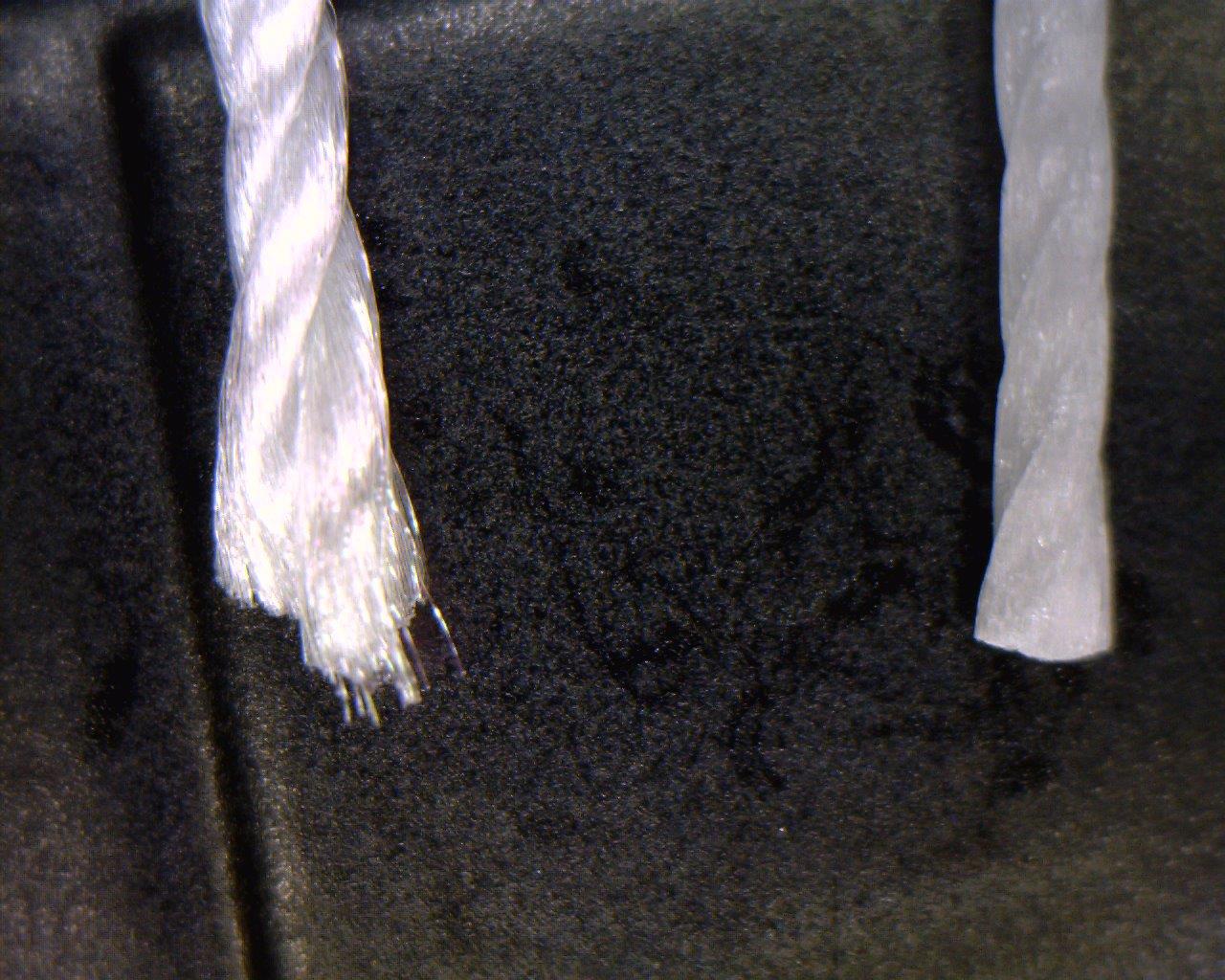 Multifilament nylons, polyesters and aramid yarns go through a series of twisting and winding steps during the sewing thread manufacturing process. The twisting process is generally required to convert any yarn into a thread that can be used for sewing, but bonding, an additional process step, may not be needed depending on the size, use and industrial application.
Multifilament nylons, polyesters and aramid yarns go through a series of twisting and winding steps during the sewing thread manufacturing process. The twisting process is generally required to convert any yarn into a thread that can be used for sewing, but bonding, an additional process step, may not be needed depending on the size, use and industrial application.
Soft Industrial Sewing Thread
Soft multifilament sewing threads are wound to a metered sewing thread spool right after the twisting process. These twisted only threads may or may not have sewing lubricant applied during the final winding process and are often used as the bottom or bobbin thread, because there's less need for abrasion resistance or ply security. Most of the abrasion in sewing comes from the needle, supplied by top thread, so bonding of the bottom thread is not as critical. Some advantages are:
- Soft thread is cost effective for light industrial thread use on low speed sewing equipment
- Soft thread is low-tech and widely available
- Soft thread can be used as general purpose twine or string for non-sewing applications
Bonded Industrial Sewing Thread
Bonded sewing threads involve an extra process during manufacturing called coating, treating, or bonding where the thread manufacturer applies a special bond formula to encapsulate and keep the multiple ends of twisted yarn together, prior to the final winding step. This technical process involves chemistry and technical process engineering, resulting in a more advanced technical sewing thread. Some advantages of bonded thread include:
- Bonded thread is slightly stiff and cuts very cleanly, making needle threading easy
- Bonded thread has a smooth, uniform surface for consistency in stitch formation
- Plies are picked up as a group by the hook for good loop formation
- Higher sewing speeds are possible with a protective layer formed by the bond between the thread and the sewing machine contact surfaces
- Additional thread properties like added UV protection and non-wicking can be added in the bonded thread manufacturing step.
In most cases a bonded poly, bonded nylon, or bonded aramid thread will work for all applications. If you need help in deciding if a bonded or soft thread is right for your application check our Mil-spec blogs:
- Mil Spec Nylons (A-A-59826)
- Mil Spec Polyesters (MIL-DTL-32072)
and remember when it comes to Mil Specs, Type I is a soft thread and Type II indicates that the thread must be bonded.
If you need help determining if you should use soft or bonded polyester thread or bonded nylon thread, our technical team can help and provide a bonded or soft thread engineered for your requirements.



